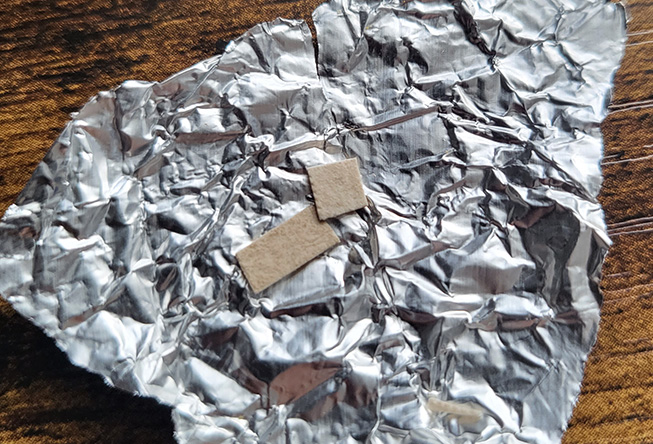LSD
Lysergic acid diethylmide (LSD), also known colloquially as acid, is a psychedelic drug. Effects typically include intensified thoughts, emotions, and sensory perception. In sufficiently high dosages, LSD manifests primarily visual, as well as auditory, hallucinations. Dilated pupils, increased blood pressure, and increased body temperature are typical.
LSD is not considered addictive, because it does not produce compulsive drug-seeking behavior. It is known to cause mystical, spiritual, or religious experiences.
Function
LSD is both the prototypical psychedelic and one of the 'classical' psychedelics, being the psychedelics with the greatest scientific and cultural significance. It is exceptionally potent, with as little as 20 μg capable of producing a noticeable effect. The lethal oral dose of LSD in humans is estimated at 100 mg, based on LD50 and lethal blood concentrations observed in rodent studies, but there have been no documented fatal human overdoses from LSD.
Since LSD binds to dopamine receptors in addition to serotonin receptors its effects are also more energetic and fast paced compared to psychedelics such as psilocybin, which is not a dopamine agonist. Effects typically begin within half an hour and can last for up to 20 hours.
Spiritual use
LSD can catalyze intense spiritual experiences and is thus considered an entheogen. Some users have reported out of body experiences. LSD is also capable of occasioning mystical experiences and ego dissolution, albeit less frequently than compounds such as psilocybin.
In 1966, Timothy Leary established the League for Spiritual Discovery with LSD as its sacrament. Stanislav Grof has written that religious and mystical experiences observed during LSD sessions appear to be phenomenologically indistinguishable from similar descriptions in the sacred scriptures of the great religions of the world and the texts of ancient civilizations.
History
Swiss chemist Albert Hofmann first synthesized LSD in 1938 from lysergic acid, a chemical derived from the hydrolysis of ergotamine, an alkaloid found in ergot, a fungus that infects grain. Hofmann discovered its effects in humans in 1943, after unintentionally ingesting an unknown amount, possibly absorbing it through his skin.
The first intentional ingestion of LSD occurred on April 19, 1943, when Hofmann ingested 250 μg of LSD. He said this would be a threshold dose based on the dosages of other ergot alkaloids. Hofmann found the effects to be much stronger than he anticipated. Sandoz Laboratories introduced LSD as a psychiatric drug in 1947 and marketed LSD as a psychiatric panacea, hailing it "as a cure for everything from schizophrenia to criminal behavior, 'sexual perversions', and alcoholism."
LSD-assisted psychotherapy was used in the 1950s and early 1960s by psychiatrists such as Humphry Osmond, who pioneered the application of LSD to the treatment of alcoholism, with promising results. In the 1960s, LSD and other psychedelics were adopted by and became synonymous with, the counterculture movement due to their perceived ability to expand consciousness. Owsley Stanley, the most important black market LSD manufacturer distributed LSD at a standard concentration of 270 μg.
The drug's association with counter-culture resulted in LSD being viewed as a threat to American values and the Vietnam War effort, and it was designated as a Schedule I (illegal for medical as well as recreational use) substance in 1968.
A 2012 meta-analysis found evidence that a single dose of LSD in conjunction with various alcoholism treatment programs was associated with a decrease in alcohol abuse, lasting for several months, but no effect was seen at one year.
Production
An active dose of LSD is very minute, allowing a large number of doses to be synthesized from a comparatively small amount of raw material. Twenty-five kilograms of precursor ergotamine tartrate can produce 5–6 kg of pure crystalline LSD; this corresponds to around 50–60 million doses at 100 μg. Because the masses involved are so small, concealing and transporting illicit LSD is much easier than smuggling cocaine, cannabis, or other illegal drugs.
Manufacturing LSD requires laboratory equipment and experience in the field of organic chemistry. It takes two to three days to produce 30 to 100 grams of pure compound.
Historically, LSD solutions were first sold on sugar cubes, but practical considerations forced a change to tablet form. After tablets came "computer acid" or "blotter paper LSD," typically made by dipping a preprinted sheet of blotting paper into an LSD/water/alcohol solution. More than 200 types of LSD tablets have been encountered since 1969 and more than 350 blotter paper designs have been observed since 1975.
Notable users
Bill Gates implied in an interview with Playboy that he tried LSD during his youth.
Steve Jobs, co-founder and former CEO of Apple Inc., said, "Taking LSD was a profound experience, one of the most important things in my life."
Paul McCartney said that The Beatles' songs "Day Tripper" and "Lucy in the Sky with Diamonds" were inspired by LSD trips.
